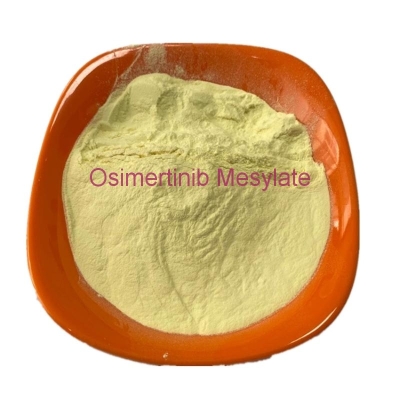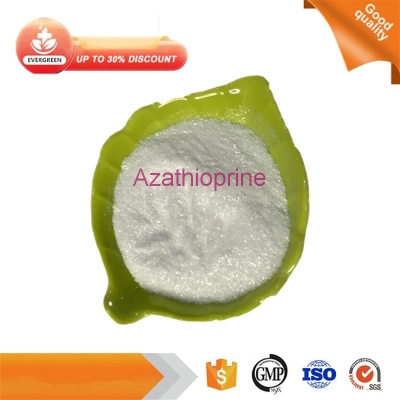-
Categories
-
Pharmaceutical Intermediates
-
Active Pharmaceutical Ingredients
-
Food Additives
- Industrial Coatings
- Agrochemicals
- Dyes and Pigments
- Surfactant
- Flavors and Fragrances
- Chemical Reagents
- Catalyst and Auxiliary
- Natural Products
- Inorganic Chemistry
-
Organic Chemistry
-
Biochemical Engineering
- Analytical Chemistry
- Cosmetic Ingredient
-
Pharmaceutical Intermediates
Promotion
ECHEMI Mall
Wholesale
Weekly Price
Exhibition
News
-
Trade Service
The 2022 European Society for Internal Oncology (ESMO) Annual Meeting was held
in Paris from September 9 to 13 local time.
As Europe's most prestigious and influential oncology conference, ESMO Annual Conference covers basic research, translational research and the latest clinical research advances, and will provide a broad and excellent academic platform
for clinical practice, multidisciplinary discussion, etc.
DESTINY-Gastric02 (DG02) test is an important exploration of antibody drug conjugate (ADC) T-DXd applied to HER2+ advanced gastric cancer and gastroesophageal junction carcinoma (GC/GEJC) second-line treatment, at this ESMO conference, DG02 trial updated its research results, Yimai Tong invited Professor Liu Tianshu of Zhongshan Hospital affiliated to Fudan University to interpret this, and look forward to the application prospects of ADC in HER2+ GC treatment
。
Professor Liu Tianshu
Chief physician and doctoral supervisor
Director of the Department of Oncology, Zhongshan Hospital, Fudan University
Director of the Early Tumor Research Ward
Secretary General of the Cancer Prevention and Treatment Center of Zhongshan Hospital Affiliated to Fudan University
Director of Shanghai Cancer Chemotherapy Quality Control Center
Chairman of the 7th/8th Clinical Epidemiology and Evidence-Based Medicine Specialty of Shanghai Medical Association
Vice Chairman of the CSCO Antitumor Drug Safety Management Committee/Translational Medicine Committee
Vice Chairman of the Clinical Oncology Committee of the Chinese Association of Women Physicians
Member of the Standing Committee of the CSCO Clinical Research Committee/Gastric Cancer Committee
Member of the Standing Committee of the 6th Gastric Cancer Professional Committee of the Chinese Anti-Cancer Association
Member of the Standing Committee of the Special Committee on Cancer Big Data and Real World Research of the Chinese Anti-Cancer Association
He is a member of the Oncology Branch of the Chinese Medical Association
Member of the Standing Committee of the Tumor Targeted Therapy Technology Branch of the Chinese Society of Biomedical Engineering
Member of the Standing Committee of the Oncology Rehabilitation Branch of the Chinese Gerontology Society
Medical Pulse Tong: What kind of dilemma is there in the treatment of HER2+ advanced GC at present, and where is the dawn?
Professor Liu Tianshu
The treatment of HER2+ advanced GC does still face some clinical difficulties, and we know that anti-HER2 therapy has now become the first-line standard treatment for HER2+ advanced GC, but after the failure of first-line trastuzumab therapy, the choice of second-line treatment is currently unclear
.
Several previous studies have evaluated this direction, but the results have not been satisfactory
, whether trastuzumab is treated across the line, trastuzumab plus chemotherapy, or other targeted drug therapy.
Excitingly, however, the DG02 trial, announced at ESMO this year, provides a shot in the arm for the second-line treatment of HER2+ advanced GC
.
Previous DESTINY-Gastric01 trials have confirmed that T-DXd performs well in the post-line treatment of HER2+ advanced GC, and the DG02 trial has evaluated the efficacy and safety of T-DXd for second-line therapy in patients with HER2+ advanced GC/GEJC who have failed first-line trastuzumab therapy, and the updated results of the DG02 trial and the publication of the total survival (OS) analysis can be called HER2+ Second-line treatment of advanced GC brings a new dawn
.
How do you see the value of DG02 research in the breakthrough of HER2+ advanced GC second-line therapy?
Professor Liu Tianshu
The DG02 trial is an open-label, multicenter Phase II clinical study designed to evaluate the efficacy and safety
of T-DXd in HER2+ advanced GC/GEJC with disease progression following trastuzumab therapy.
The primary endpoints of the study were objective response rates (ORR) confirmed by the Independent Center Review (ICR), and secondary endpoints included progression-free survival (PFS) and OS, among others
.
Notably, the study specifically noted the need for a re-biopsy to confirm HER2 status after patients advanced first-line therapy, as available data show that approximately 30% of patients with HER2+ advanced GC will turn negative after first-line trastuzumab progression, which may be one of the main reasons for patients developing anti-HER2 therapy resistance in previous studies, so reconfirmation of HER2 status is of great
。
The results of the updated DG02 trial showed that patients had a confirmed ORR of 41.
8%, with a complete response (CR) rate of 5.
1%, an overall disease control rate (DCR) of 81.
0%, and a median duration of response (DOR) of up to 8.
1 months
.
Previous data show that the ORR of second-line standard chemotherapy in patients with advanced GC is usually about 30%, so this result undoubtedly deserves our attention
.
The trial's OS and PFS data also performed well, with patients with median OS breakthrough of one year to 12.
1 months and median PFS reaching 5.
6 months
.
Compared with previous studies, the median OS of second-line chemotherapy in patients with HER2+ GC is usually about 9 months, and the median PFS is usually 3-4 months
.
Therefore, the DG02 trial achieved satisfactory results in both short-term disease remission and long-term patient survival benefits
.
In terms of safety performance of the trial, the main adverse events included nausea, fatigue and vomiting, mostly grade 1-2, and the incidence of drug-related adverse events of grade 3 ≥ was 30.
4%, mainly including anemia, neutrophil decline and nausea
.
Safety spectrum performance is consistent with previous DG01 studies, and patients are generally well
tolerated.
In terms of patient quality of life, EQ-5D VAS and FACT-Ga-Ga-Ga-scale assessments showed no significant decline
in patients' quality of life during the 7th cycle of administration.
Based on the above data, the updated results of the DG02 trial announced at the conference are a major benefit for the second-line treatment of HER2+ advanced GC, and point out the way
for the future treatment direction of HER2+ GC.
Pulse: Where is ADC going in the future on the road to HER2+ GC treatment?
Professor Liu Tianshu
First of all, if a drug wants to benefit more patients, the number of application lines should not be limited to the back line, but should be moved forward under sufficient data support, such as the back line moving forward to the second line, the second line moving forward to the first line, and even moving forward to the perioperative period
.
Second, when monotherapy encounters bottlenecks, clinical researchers should consider the strategy of combination drugs to break through the existing dilemma and meet the needs
of more patients.
The success of the DG02 study provides a new option for second-line treatment in patients with HER2+ GC, but the exploration of ADC should not stop there, the current DESTINY-Gastric03 trial has been carried out, the study aims to explore the safety and anti-tumor activity of T-DXd combined chemotherapy and/or immunotherapy in patients with HER2+ GC in first-line therapy, the study set up multiple treatment arms, multi-dimensional evaluation of T-DXd monotherapy and combination drugs in first-line treatment, The results are worth looking forward to
.
In addition to first-line treatment, the application of perioperative ADC drugs should also be concerned, of course, we have not yet seen the results of the application of ADCs to the perioperative period of the study published
.
However, I believe that as the application of ADC in patients with advanced GC matures, it is bound to bring new inspiration and direction
to the exploration and research of HER2+ GC perioperative period.
DG02 study details
Research background
The DG02 trial, a phase II clinical study evaluating the application of T-Dxd to second-line therapy in Western patient populations with HER2+ GC/GEJC, had preliminary results showing good efficacy of the regimen, confirming an ORR of 38.
0% (95% CI, 27.
3% to 49.
6%)
.
Here, the researchers updated the results of the efficacy and safety analysis and published the OS data
.
Research protocols
Studies included patients with HER2+ unresectable or metastatic GC/GEJC who progressed during or after first-line therapy with first-line therapy based on trastuzumab and HER2+ status
confirmed by a re-biopsy after treatment progression.
All patients were treated with T-DXd 6.
4 mg/kg Q3W
.
The primary study endpoints were confirmed ORR assessed by ICR based on RECIST v1.
1, and secondary study endpoints included PFS assessed by ICR, DOR, OS assessed by ICR, and patient-reported quality of life
.
The detailed design of the study is shown in
Figure 1.
Figure 1 Study design
Results of the study
As of data cut-off on November 8, 2021, a total of 79 patients
were enrolled in the study.
The median age was 60.
7 years, 76 patients (96.
2%) had received 1-line treatment, and 3 patients (3.
8%) had received 2-line treatment
.
After a median follow-up of 10.
2 months, 10 patients (12.
7%) were still receiving treatment
.
The analysis of the primary study endpoints was shown in Figure 2 with a confirmed ORR of 41.
8% for patients, with CR in 4 patients, partial remission (PR) in 29 patients, and disease stability (SD) in 31 patients with a DCR of 81.
0%.
The median patient DOR was 8.
1 months and the median time to remission (TTR) was 1.
4 months
.
Figure 2 Analysis of disease remission in patients
As shown in Figure 3, survival analysis showed that the median OS was 12.
1 months (95% CI, 9.
4-15.
4), the 12-month OS rate was 50.
6%, and the median PFS of patients was 5.
6 months (95% CI, 4.
2-8.
3).
Figure 3 Patient OS analysis (left) and PFS analysis (right)
As shown in Figure 4, safety analysis showed that the incidence of drug-related adverse events (TEAEs) at any level was 94.
9%, and the incidence of drug-related TEAEs at ≥ grade 3 was 30.
4%.
The most common TEAEs included nausea (67.
1%), vomiting (44.
3%), and fatigue (57.
0%)
.
Drug-related interstitial lung disease/pneumonia occurred in 8 patients, 75% of whom were grade 1-2, and the median onset of drug-associated interstitial lung disease/pneumonia was 80.
5 days and the median duration was 36.
0 days
.
Figure 4 Security analysis
Analysis of the reported quality of life of the patients showed no significant decrease in the quality of life of the patients up to week 7 of
treatment.
Figure 5 Patient quality of life analysis
Conclusion of the study
Updated data from the DG02 trial suggest that the clinical benefit of T-DXd second-line therapy is long-lasting and safe
for patients with HER2+ non-resectable or metastatic GC/GEJC who have progressed after first-line treatment based on trastuzumab.
Editor: Traveler
Reviewer: Professor Liu Tianshu
Typesetting: Youshi
Executive: Tourist
END






